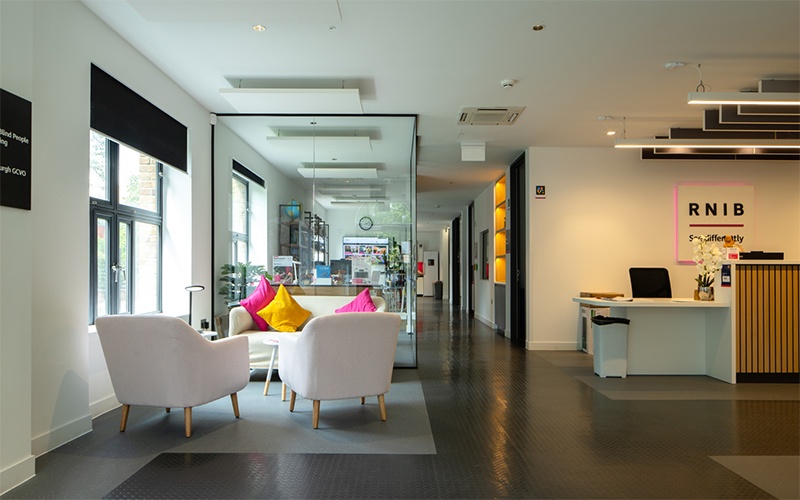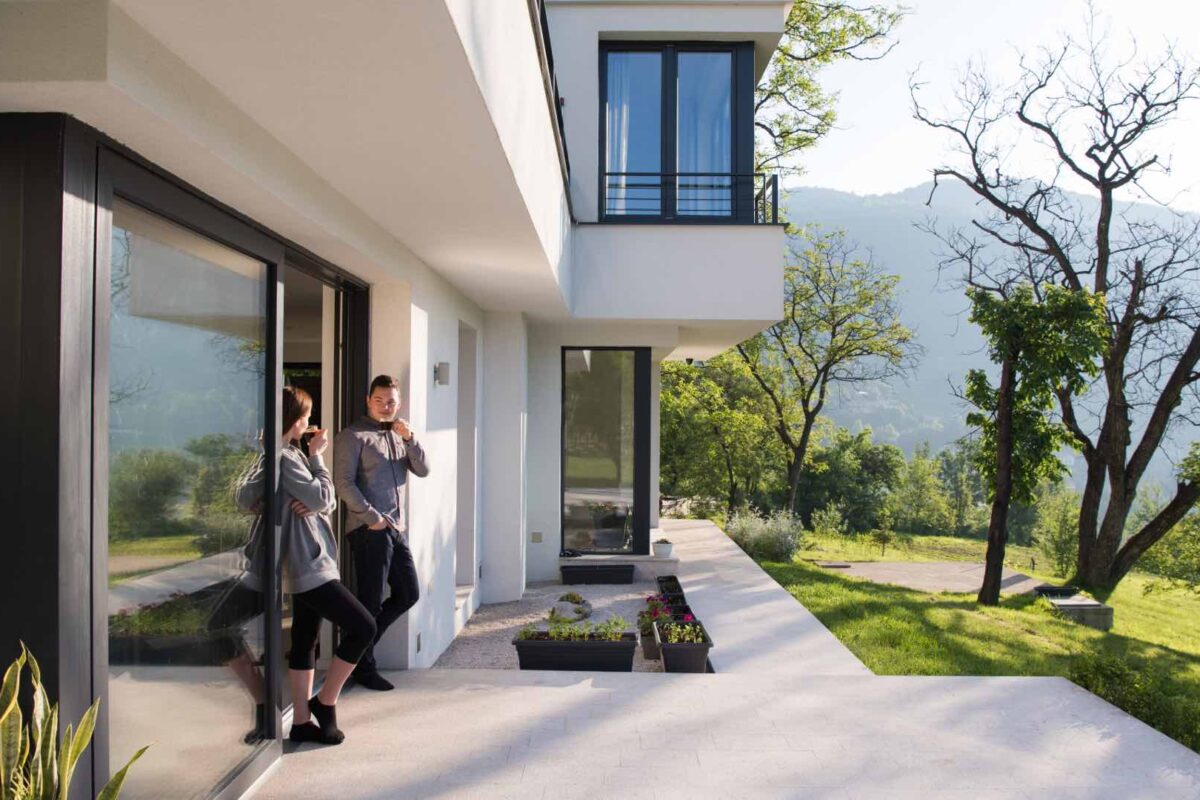The new London office of the Royal National Institute of Blind People (RNIB) is the first building in the UK to fully adopt a new BSI neurodiversity standard.
The organisation, which is the UK’s leading sight loss charity, offers practical and emotional support to blind and partially sighted people, their families and carers. The RNIB’s newly refurbished Grimaldi building in Islington has been designed to offer a modern, flexible and accessible facility for customers, patients, volunteers, supporters and staff.
It is the first building in the country incorporating innovations for those living with sight loss, alongside the implementation of the BSI PAS 6493 Design for the Mind – Neurodiversity and the Built Environment design guidance while also meeting current good practice for accessibility and inclusion. Work in Mind reported on the launch of the new standard in late 2022.
The building, created by Buro Happold and architects from Kay Elliott, brings together key RNIB services, including the Low Vision Service assessment clinics, the Products for Life store, usability lab space designed to imitate an everyday ‘living room’ showcasing key everyday adaptations, a heritage area, ‘Talking Books’ recording studios, the RNIB Connect Radio broadcast studio, a multi-faith room, and serenity space for people experiencing sensory overload or stress, and amenities for guide dogs.

Key features include:
-
Visually contrasting key surfaces including floors, walls and furniture, including a clear, colour-coded, tactile signage system with Braille and embossed text and symbols.
-
NaviLens app points so that blind and partially sighted people can access and locate information and interact with the environment around them.
-
An embossed vinyl flare path indicating the main circulation around each floor.
-
Fully controllable lighting for both intensity and colour temperature on each bank of desks and in meeting rooms.
-
Acoustics to reduce unwanted noise throughout.
-
Ten Ecophon acoustic rafts suspended above the reception desk have incremental light reflectance values (LRV) to illustrate how visual contrast is measured.
-
A passenger lift with voice annunciation, visual displays and tactile signage within the lift and on each landing.
-
Kitchens with tactile and visual cues for cupboards and taps, and contrasting marine edge worktops.
-
3D printing enhances many areas, such as indicators on handrails and taps, and signs on store and kitchen cupboards.
-
The building also has a sensory garden and zoned areas inside for quieter and collaborative work.
Tricia Smikle, senior project manager at RNIB, described the new hub as “so much more than a place of work,” commenting: “It symbolises the charity’s confidence to look forward and to create an inclusive environment designed with everyone in mind.”
She continued: “As a charity, we believe that the world should be accessible to all, and this important move and adopting the new BSI guidance for neurodiversity represents RNIB’s values, and our continued determination to build a more inclusive society.”
Jean Hewitt, Buro Happold’s inclusive environment specialist and technical author of the new PAS 6463 Neurodiversity design standard said, “It has been a true joy and a privilege to work on the first building in the UK to interpret and apply the new guidance. It’s purposefully drafted to offer flexibility in the way is applied to meet different circumstances and user needs.”
_____
Work in Mind regularly publishes articles, news and project overviews about design for neurodiversity.
Photo – Main Header © RNIB
Photo – Main Header © Buro Happold
Joanna Watchman
Joanna Watchman is our founder. She is a communications consultant specialising in the built environment and technology sectors. Having spent years writing, thinking and talking about the way buildings could (and should) be more in tune with the people that use them, Joanna decided to create Work in Mind. She is on a mission to bring together all those who believe in smarter, more connected human-centric buildings.




